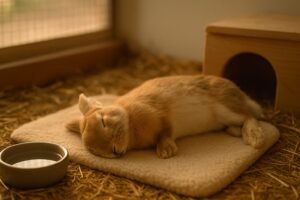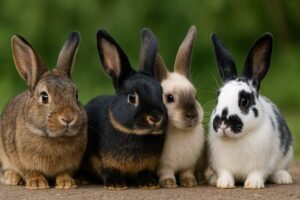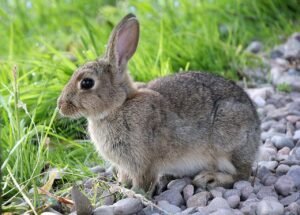This rabbits fact file offers quick facts about the rabbit species, physical traits, habitat, diet, and behavior.
Key Takeaways
-
Rabbits belong to the order Lagomorpha with about 50 species globally, distinguished from hares by size, social behavior, and physical traits.
-
Rabbits require a high-fiber diet for dental health, and their digestive system includes cecotrophy to maximize nutrient absorption.
-
Both wild and domesticated rabbits have unique social structures and communication methods, yet face distinct challenges, including habitat threats and the need for proper care.
Rabbit Species and Classification
Rabbits belong to the order Lagomorpha, a classification distinct from rodents that was established in 1912. Within this order, the most common rabbit genera include Oryctolagus, which is commonly called the European rabbit, and the genus Sylvilagus, which includes over 13 wild species. Globally, there are about 50 different species of rabbits and hares, with 29 recognized rabbit species.
The smallest of these is the pygmy rabbit, which measures just 7.9 inches in length and weighs a mere 0.9 pounds. Their diversity showcases their adaptability and evolutionary success across different environments.
Differences Between Rabbits and Hares
Rabbits and hares, though often confused, have distinct differences that set them apart:
-
Rabbits are smaller and more social animals, living in complex burrow systems known as warrens.
-
Hares are larger, solitary creatures with longer ears and bigger back legs.
-
At birth, rabbits are hairless and blind, dependent entirely on their mothers.
-
Hares are born fully furred and capable of seeing and moving shortly after birth, unlike other animals. For more detailed information, refer to the hare’s main article.
The European rabbit is the species most commonly domesticated and kept as pets, while hares remain wild and untamed. Their domesticability has made them popular pets, in stark contrast to the solitary and untamed hares, showcasing their distinct evolutionary paths.
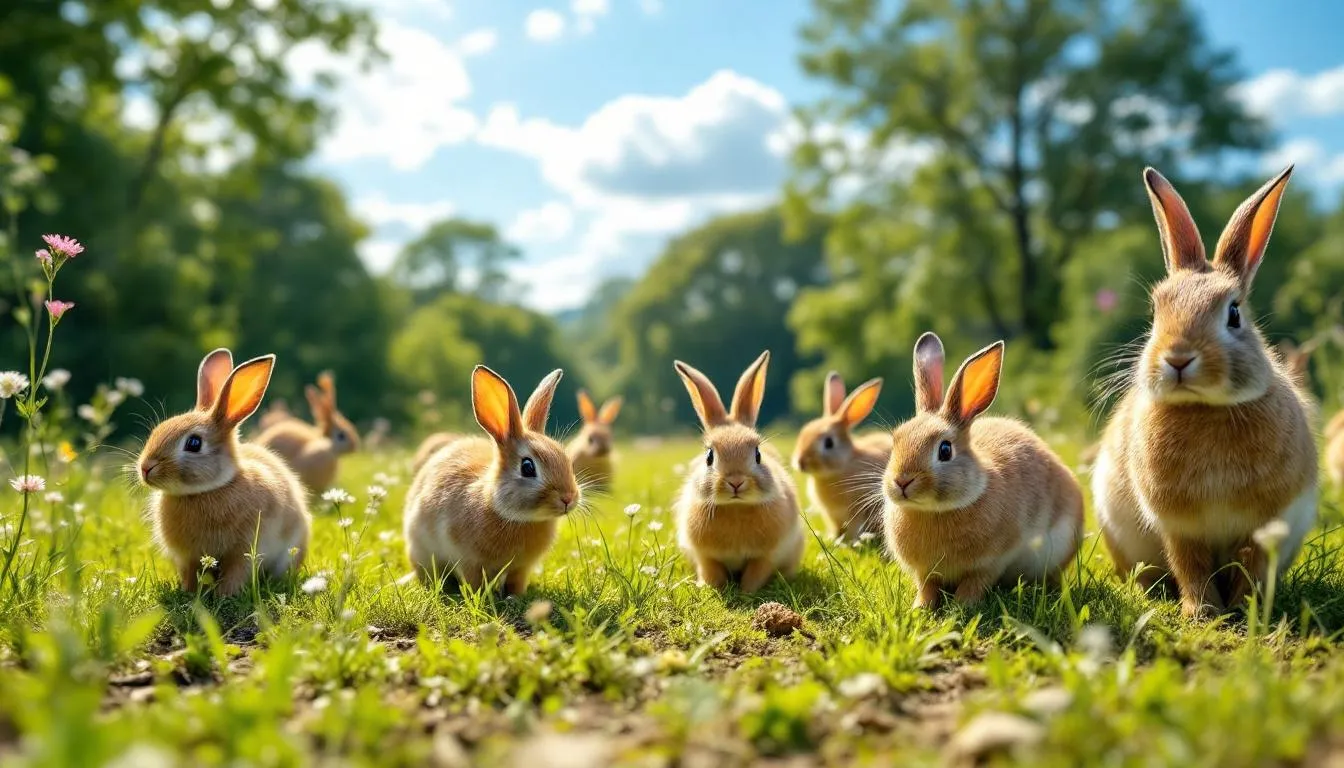
Physical Characteristics of Rabbits
Rabbits are renowned for their distinctive physical features, which include long ears, powerful hind legs, and nearly 360-degree panoramic vision. Adult rabbits typically weigh between 2.4 to 5.5 pounds, and their eye placement allows them to detect movement from almost any direction while only having a small blind spot right in front of them.
These features are vital for survival, helping them evade predators and navigate effectively while detecting predators.
Rabbit’s Ears
Rabbit ears are multifunctional marvels that serve several critical purposes. Beyond their obvious role in hearing, the outer ear structure, known as the pinna, captures sound efficiently, allowing rabbits to detect predators from a distance. Additionally, their ears play a vital role in thermoregulation; by radiating excess heat, rabbits can cool their bodies during hot weather.
Additionally, rabbit ears serve as communication tools. The position of a rabbit’s ears can indicate its mood—forward-facing ears often show calmness, while ears laid back might signal annoyance or fear. Their multifunctional ears are essential for both survival and social interaction in daily life.
Hind Limbs and Movement
Rabbits are built for speed and agility due to several key features:
-
Powerful rabbit’s hind limbs
-
Strong bones and well-developed muscles, especially the quadriceps and hamstrings
-
Specialized digitigrade posture, where they run on their toes, allowing for quick and efficient movement
Rabbits can jump over 2 feet high and reach speeds of up to 45 miles per hour. This swift movement is crucial for survival, aiding in escaping predators and navigating territories.
Teeth Growth
Rabbits have a unique dental structure, with two sets of continuously growing incisors. This constant growth necessitates a high-fiber diet rich in hay to help wear down their rabbit teeth naturally. Without proper wear, dental problems can arise, so providing a suitable diet is crucial for dental health.
Rabbit Habitats
Rabbits are highly adaptable animals that can inhabit a wide range of environments, from farmland and grassy lands to moorlands and forests. In the wild, they prefer areas with dense vegetation that offer cover from predators and ample food supply, where rabbits eat a variety of plants, including those that resemble rabbit fur. Additionally, there are many interesting rabbit facts that highlight their unique behaviors and characteristics.
Their social nature leads them to live in large groups within complex warrens, offering multiple entrances and safe havens from predators.
Global Distribution
Rabbits have a remarkable global presence, found on every continent except Antarctica. North America alone is home to more than half of the world’s rabbit population. These adaptable creatures thrive in diverse environments, from meadows and forests to deserts and wetlands.
The European rabbit, originally native to southwestern Europe, has been introduced to many parts of the world by humans. This distribution highlights their adaptability and the influence of human activities on their spread, particularly in relation to European rabbits.
Environmental Impact
While rabbits can thrive in various environments, their high reproductive rates and feeding habits can lead to significant agricultural damage. In regions like Australia and New Zealand, introduced rabbit populations have become pests, causing extensive harm to crops and native vegetation.
Efforts like disease control, fencing, and trapping are used to manage populations and reduce ecological damage.
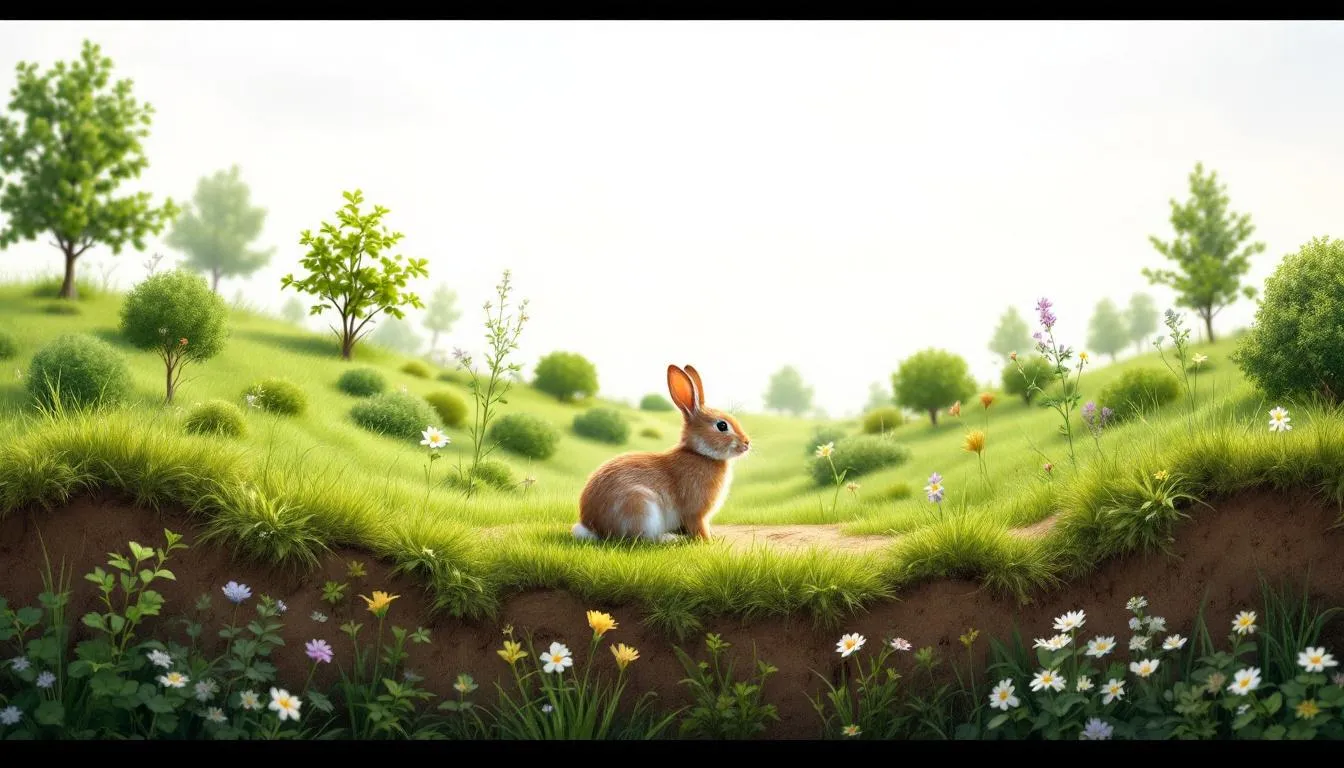
Rabbit Diet and Feeding Habits
Rabbits need a diet rich in fiber to support their digestive system and overall health. Key dietary components include:
-
Fresh hay, which provides necessary roughage to keep their continuously growing teeth in check
-
Leafy greens, offered in variety and quantity
-
Fruits, given sparingly as treats due to their high sugar content
This balanced rabbit’s diet is essential for keeping rabbits healthy and happy.
Digestive System
The rabbit’s digestive system is uniquely adapted to their plant-based diet. An interesting aspect is cecotrophy, where rabbits re-ingest cecotropes—soft fecal pellets rich in nutrients—to maximize nutrient absorption. This process allows them to extract essential vitamins and minerals that would otherwise be lost.
Insufficient fiber can cause dental and health issues, underscoring the need for a diet rich in hay and greens. This digestive adaptation necessitates proper dietary management for their well-being.
Water Consumption
Water is a vital component of a rabbit’s diet, with their daily water intake comparable to that of a much larger dog. Continuous access to clean, fresh water is vital for their health.
Water bowls are often preferred over bottles, as they encourage more natural drinking habits.
Reproduction and Life Cycle
Rabbits are prolific breeders with the following characteristics:
-
Gestation period of around 30 days.
-
Does can conceive immediately after birth, enabling multiple litters per year.
-
A typical litter consists of 4 to 12 baby rabbits, or kits.
-
A single litter can consist of up to 60 kits annually. Breeding rabbits can lead to a significant increase in population.
Their rapid reproduction rate is crucial for thriving in various environments.
Baby Rabbits
Newborn rabbits, or kits, have the following characteristics and developmental stages:
-
Born naked, blind, and entirely dependent on their mothers.
-
The mother rabbit’s milk is highly nutritious, supporting rapid growth and development.
-
Kits begin to develop fur a few days after birth.
-
Their eyes and ears open around the tenth day, making them resemble a baby rabbit.
Mothers nurse their kits once or twice a day, briefly, providing essential nutrients. This feeding schedule is crucial for the kits’ survival and growth, preparing them for independence.
Lifespan
With proper care, rabbits can live up to 12 years. Longevity is influenced by diet, housing, and healthcare, requiring owners to be ready for a long-term commitment.
Rabbit Behavior and Social Structure
Rabbits are highly social animals that typically live in groups or colonies, often within burrows. Their social structure is hierarchical, with a dominant female rabbit and a male rabbit leading the group. Happy rabbits express their joy through behaviors such as binkies—joyful jumps and kicks in mid-air—and purring. Female rabbits also contribute to the social dynamics of the group, where rabbits live together harmoniously.
This social interaction and companionship are crucial for their well-being.
Communication
Rabbits communicate through a combination of:
-
Scent markings: They mark their territory by rubbing their chins on objects, depositing scent gland secretions.
-
Body postures: Thumping their hind legs is a common behavior used to warn others of potential threats.
-
Vocalizations.
Observing body language is crucial for spotting anxiety or health issues. A clenched body might indicate stress or discomfort. Comprehending these methods is vital for proper care and ensuring happiness.
Exercise Needs
Daily exercise is essential for maintaining health and happiness. A spacious enclosure with tunnels and chew toys prevents boredom and promotes fitness.
Supervised exploration outside their cages further enhances well-being.
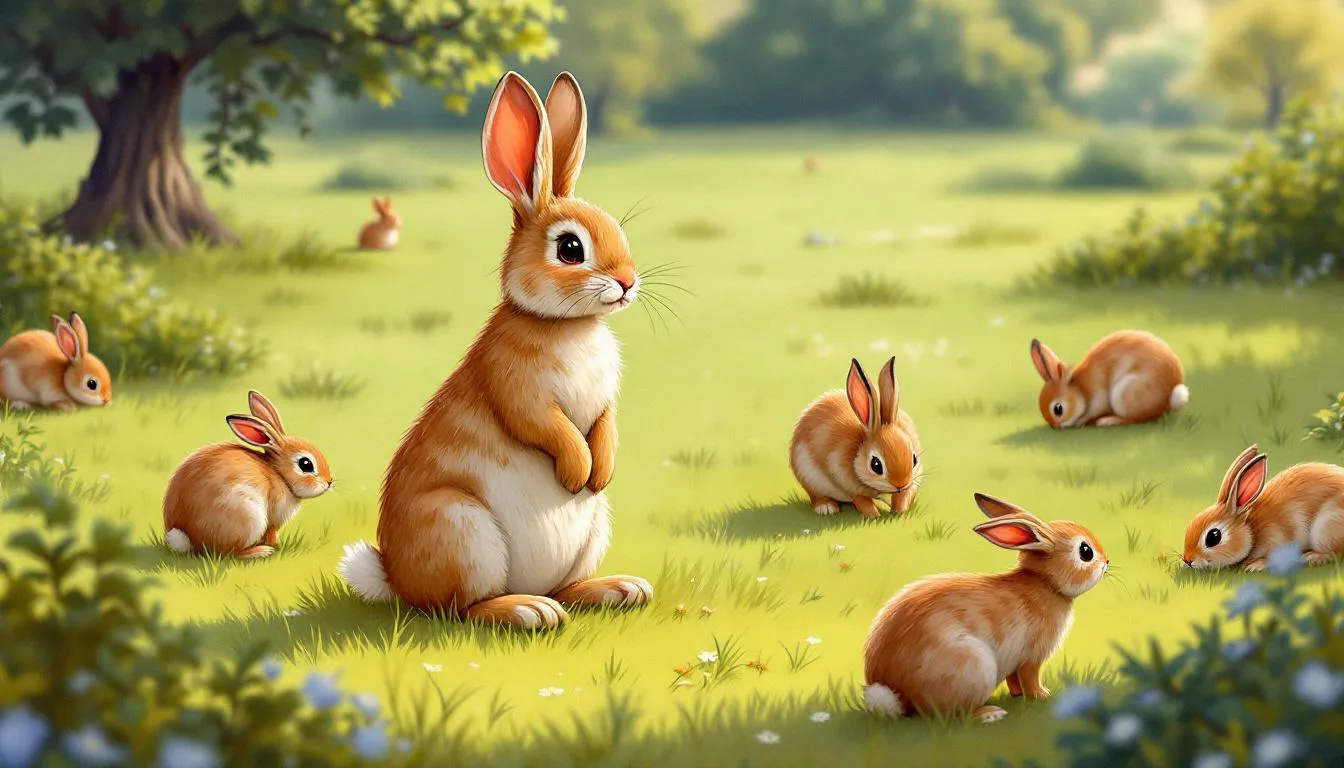
Domesticated Rabbits
Domesticated rabbits, primarily the European rabbit species, have been selectively bred for centuries, resulting in most rabbits being kept as domestic pet rabbit breeds. These rabbits are relatively easy to care for and can form strong bonds with their owners.
However, supervision is necessary to prevent them from chewing on hazardous household items like electrical wires and furniture. Their playful nature makes them delightful companions, and they can be trained to use litter boxes and perform simple tricks.
Essential Equipment
The right equipment is essential for pet rabbits’ well-being. Essential items include:
-
a cage
-
water bowl
-
litter box
-
Bedding toys are also important to keep rabbits entertained and mentally stimulated.
Regular out-of-cage exercise ensures they stay healthy and active.
Grooming and Health
Grooming is a natural part of rabbit care, helping to maintain their fur and overall health. Key grooming and health maintenance tasks include:
-
Weekly brushing to reduce shedding and keep their coat clean; while grooming, also observe your rabbit’s posture and comfort, as understanding the rabbit hunched position can be crucial for tracking their health
-
Regular nail trimming to prevent discomfort
-
Vaccinations to protect against diseases like rabbit hemorrhagic disease virus (RHDV)
Awareness and preventive care are crucial for maintaining domesticated rabbits’ health and happiness.
Wild Rabbits
Wild rabbits, often referred to as hares, are distinct from their domesticated counterparts and live in diverse habitats ranging from meadows to forests. A wild rabbit leads a life driven by survival instincts, relying on their agility and social structures for protection.
Observing their natural behaviors and adaptations offers a glimpse into their resilient lives.
Threats and Conservation
Wild rabbits face numerous threats from natural predators and human activities, such as habitat destruction and hunting. Conservation efforts are critical as nearly half of the world’s rabbit species are at risk of extinction. For instance, the critically endangered riverine rabbit requires urgent protection due to its declining population.
Various conservation programs have been implemented in response to these threats. One notable effort includes the successful breeding of rare New England cottontail rabbits at the Queens Zoo for reintroduction into their natural habitat.
These efforts underscore the need to protect and preserve rabbit species for future generations.
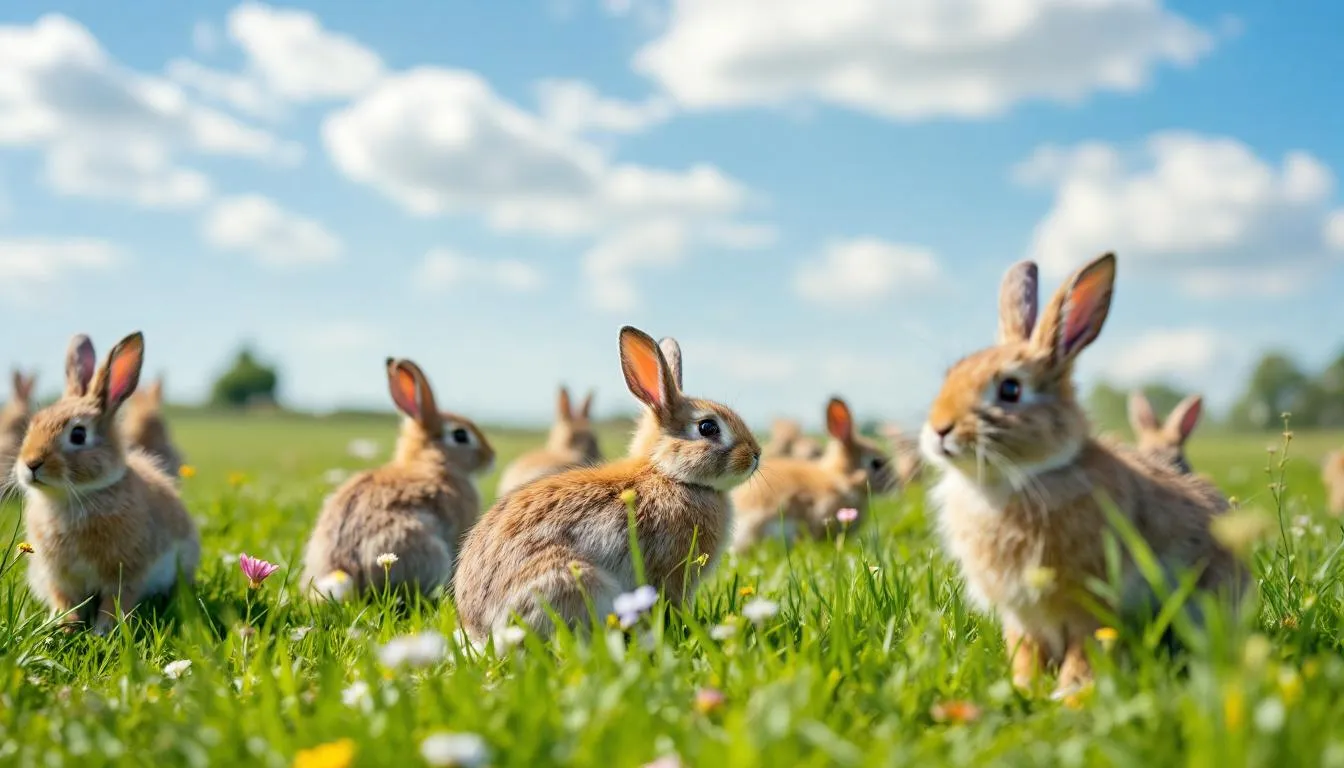
Cultural Significance of Rabbits
Throughout history, rabbits have held significant cultural importance, often symbolizing fertility and rebirth. In Celtic traditions, rabbits were believed to communicate with underground fairies.
In contrast, on the Isle of Portland in Dorset, UK, rabbits are considered unlucky, leading to unique local terms for them. These beliefs showcase the diverse perceptions and reverence of rabbits across cultures and time periods.
Folklore and Mythology
In folklore and mythology, rabbits often play the role of clever tricksters. They are frequently depicted outsmarting stronger enemies, illustrating themes of wit and deception. This theme is common in African American folktales and Southwest Asian stories, where rabbits use cunning to survive.
These stories entertain while reflecting deeper cultural values and lessons.
Modern Depictions
Modern media continues to portray rabbits as playful and mischievous characters. Iconic figures like Bugs Bunny and Peter Rabbit have captured the hearts of audiences worldwide, embodying the rabbits’ clever and endearing nature. These characters highlight the rabbit’s enduring appeal and adaptability to modern storytelling, solidifying their place in popular culture.
Summary
In summary, rabbits are remarkable animals with diverse species, unique physical characteristics, and fascinating behaviors. They inhabit various environments across the globe, from domesticated settings to wild habitats. Understanding their dietary needs, reproductive habits, and social structures enhances our appreciation and care for these creatures. Whether in folklore, modern media, or our homes, rabbits continue to captivate and inspire. Embracing the knowledge shared in this guide can help ensure that rabbits, both wild and domesticated, live happy and healthy lives.
Frequently Asked Questions
What two things never stop growing on a rabbit?
A rabbit’s nails and teeth never stop growing; both require regular maintenance to prevent issues. Regular nail trims and monitoring of their teeth are essential for their health.
What are the key differences between rabbits and hares?
Rabbits and hares differ primarily in size, habitat, and developmental stages at birth; rabbits are smaller, social, and born hairless and blind, while hares are larger, solitary, and born fully furred and able to see. These distinctions highlight their unique adaptations to their environments.
How do rabbits use their ears for thermoregulation?
Rabbits use their ears to regulate body temperature by radiating excess heat, effectively cooling themselves in hot weather. This adaptation is crucial for their thermoregulation.
What is cecotrophy, and why is it important for rabbits?
Cecotrophy is crucial for rabbits as it involves re-ingesting nutrient-rich cecotropes to enhance nutrient absorption, ensuring they receive vital vitamins and minerals for their health. This process is essential for their overall well-being.
How often do mother rabbits nurse their young?
Mother rabbits nurse their young once or twice a day for short periods, typically lasting less than three minutes each time. This efficient feeding schedule provides essential nutrition for the rapid growth of the kits.

